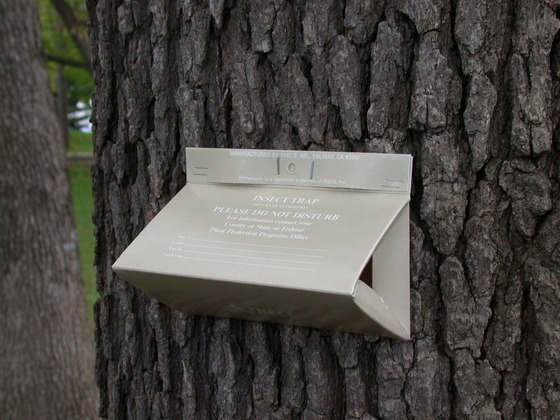MDA to Set Over 20,000 Traps to Survey for Spongy Moth
Traps will be set starting in May and will remain in the field until the fall
St. Paul, MN: The Minnesota Department of Agriculture (MDA) will set approximately 20,000 insect traps this year to survey for spongy moth (Lymantria dispar). The traps will be set throughout the eastern half of the state.
This work is part of the MDA’s annual trapping survey program, designed to protect Minnesota’s forests and urban areas from spongy moth by identifying potential problem areas for future treatments. The goal isn’t to trap every spongy moth. Instead, the survey is key to early detection and slowing the spread of the insect. Annual surveys and follow-up management delay the devastating impacts of spongy moth.
Spongy moth caterpillars eat the leaves of over 300 types of trees and shrubs, favoring oak, poplar, birch, and willow. Severe, repeated infestations can kill trees. Spongy moths are also a human nuisance.
In 2022 and 2023, record numbers of spongy moths were detected in traps placed in Minnesota, reflecting a nationwide trend of increased spread. The infested area of North America includes Minnesota’s Lake and Cook counties, much of Wisconsin, the northeastern region of the U.S., and southeastern Canada.
Nearly 40 MDA survey staff will be setting traps from May through July. Traps will remain in the field until mid-September in the southern region and through October in the northern region. The “delta” traps are small, triangle-shaped, and made of cardboard. Bigger “milk carton” shaped traps will be set in select areas of Carlton, St. Louis, and western Lake counties to survey potentially higher numbers of moths. All the traps contain a pheromone to lure in male spongy moths.
 Small cardboard delta trap set on a tree. The public is asked to not disturb these traps if found.
Download photo here
The traps are placed mainly on trees in a grid pattern at a specified distance from each other. The grid allows for the traps to detect as many male moths as possible and provide population data. To be successful, it is important to maintain the survey grid. Citizens are asked not to disturb the traps and to call the MDA’s Report a Pest line at 888-545-MOTH (6684) or email [email protected] if they would like traps moved or removed from their property.
In addition, this year the MDA is asking the public to be extra vigilant on spotting potential infestations and reporting potential spongy moth sightings via the Report a Pest online service or by emailing [email protected].
“With the public’s help, this work protects industries like tourism and forestry from economic harm and saves Minnesota’s urban and forested areas from environmental damage,” said Plant Protection Director Mark Abrahamson.
For more details about the trapping survey program and spongy moth, visit the MDA website.
###
|